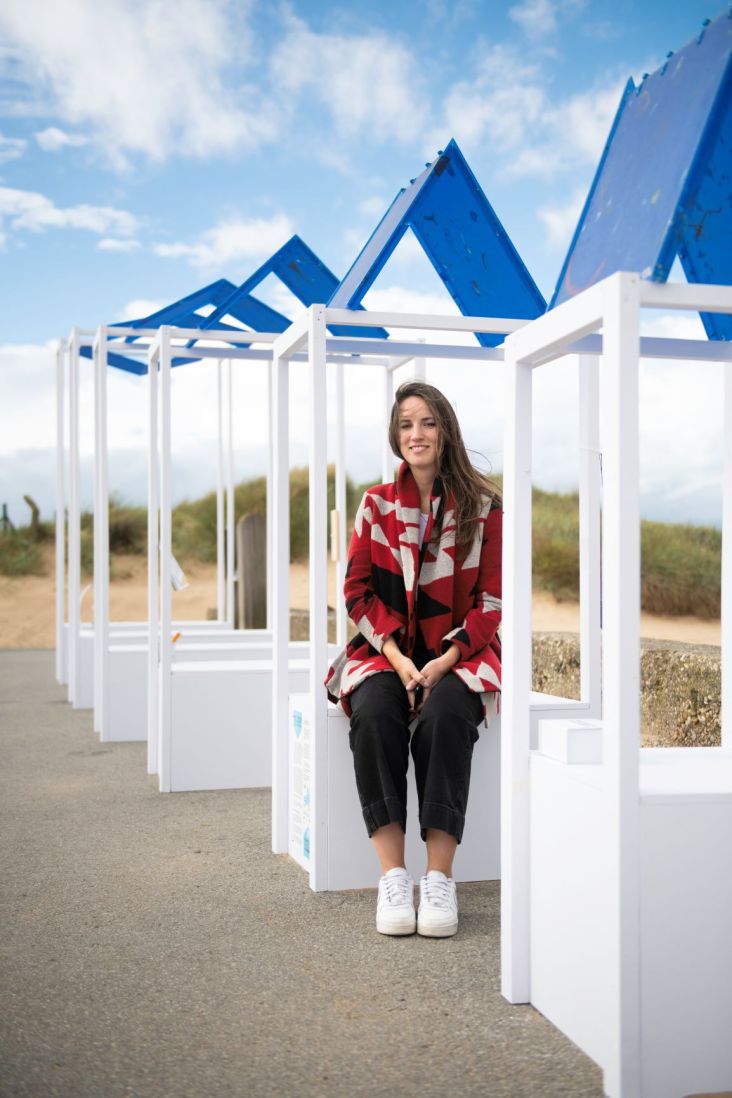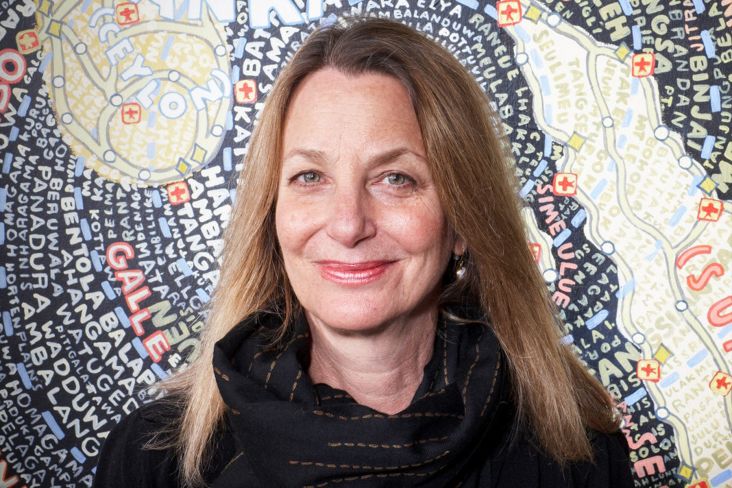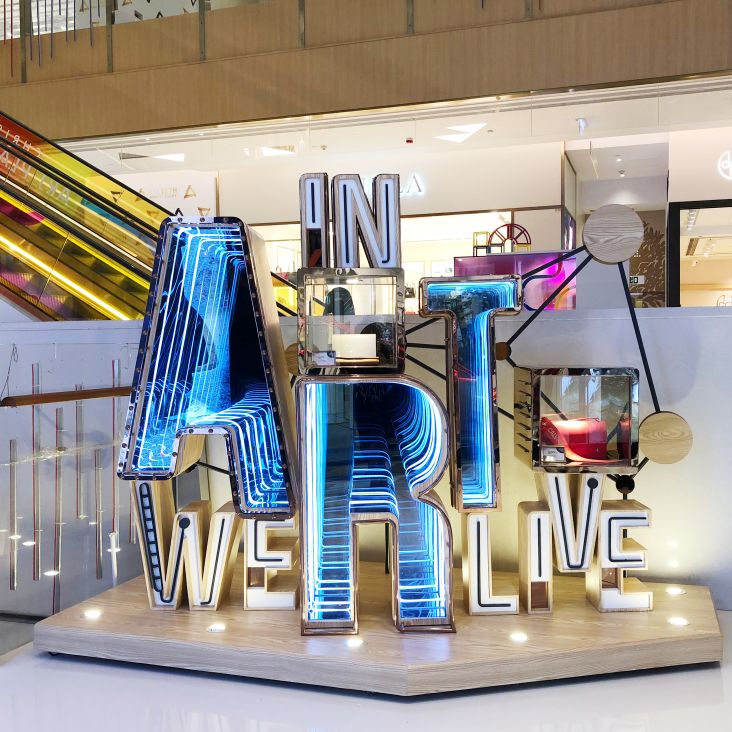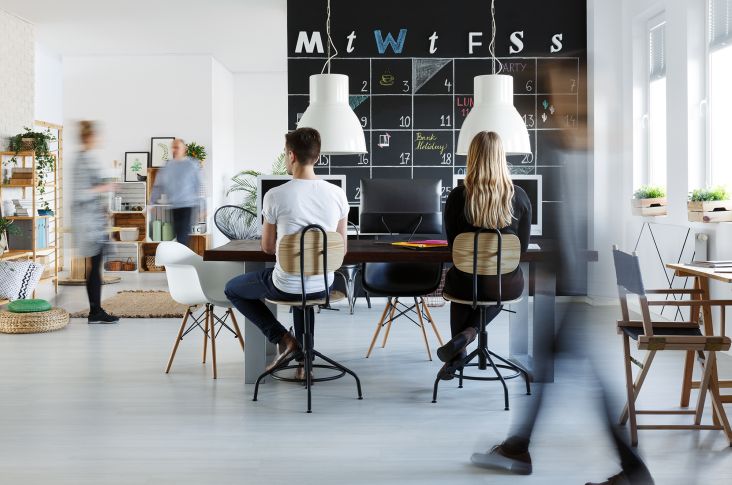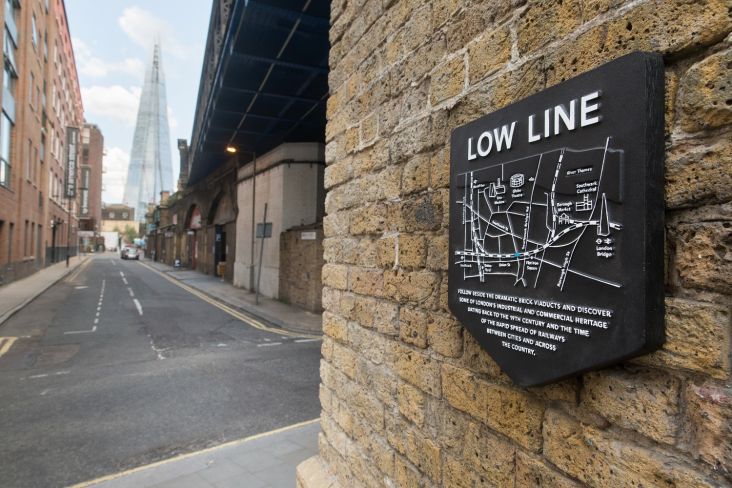Slow down, sit down, look again: Gitta Gschwendtner brings new design perspectives to the National Trust
If you visit the National Trust's Fenton House in Hampstead over the next few months, you'll be encouraged to slow down, sit and reflect on the history of the 17th-century merchant home.
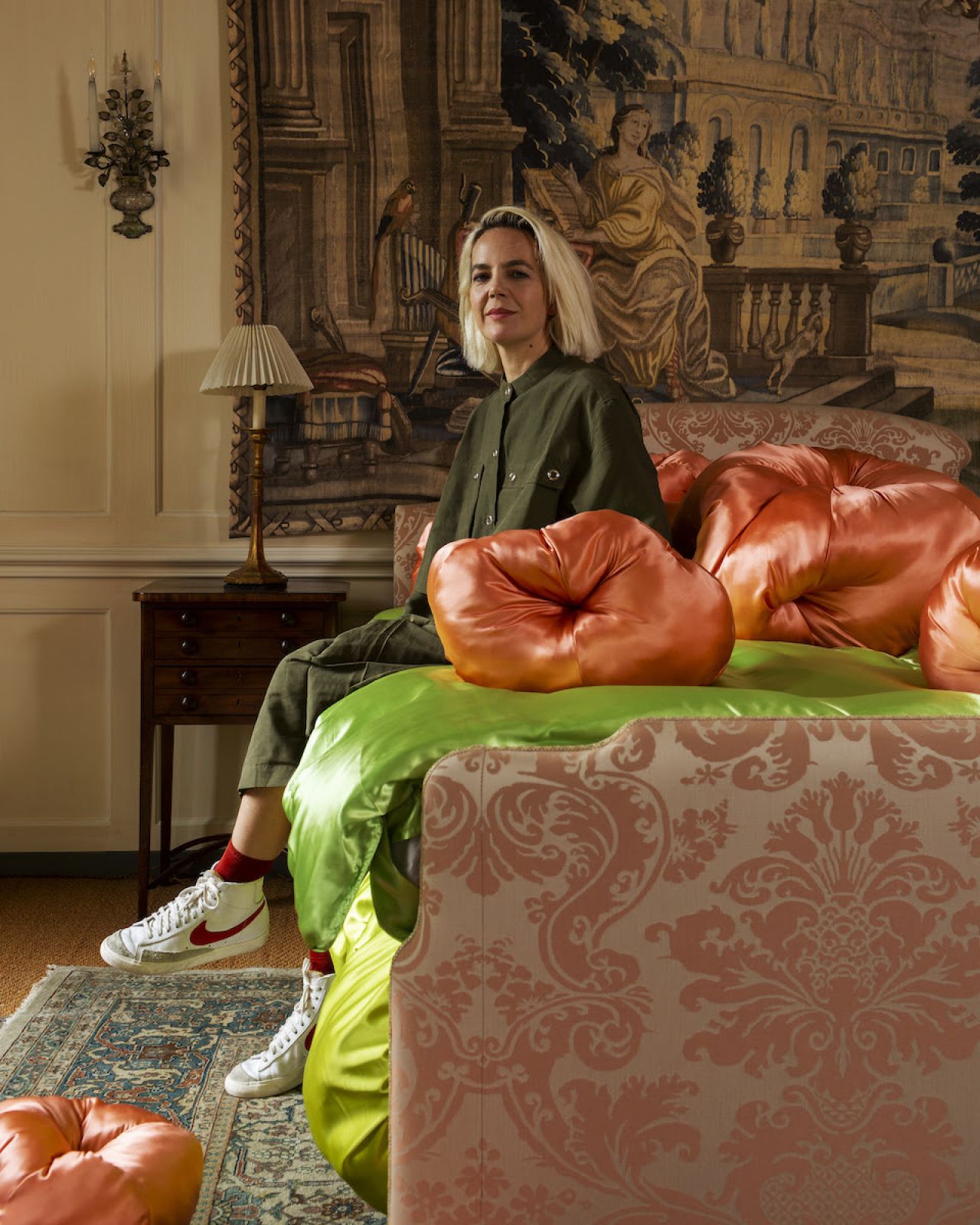
Designer Frith Kerr sitting on her seating installation at Fenton House. Photo credit: Oskar Proctor
It's part of a new exhibition curated by designer Gitta Gschwendtner to explore Fenton’s rich and characterful heritage and create a series of installations within the property.
Gitta, alongside five other participating designers, have selected and responded to a particular detail of their chosen room – whether a feature of its interior, its existing furniture or the artefacts it contains – and offer their interpretation by creating new seating. These interventions create a unique collision of past and present to encourage people to slow down their journey through the house, take time to sit, and consider the various aspects of the home and its contents from a fresh perspective.
The other designers include Michael Marriott, Nina Tolstrup, Carl Clerkin, Frith Kerr and Maisie Broadhead – the latter two, a graphic designer and jewellery artist respectively, are new to the discipline of furniture design. Varied in background and outlook, but united by a curiosity for the multiple narratives of Fenton House, the designers will each find a unique and personal way to interrupt the space, offering new perspectives on Fenton’s collections and the lives of its former residents.
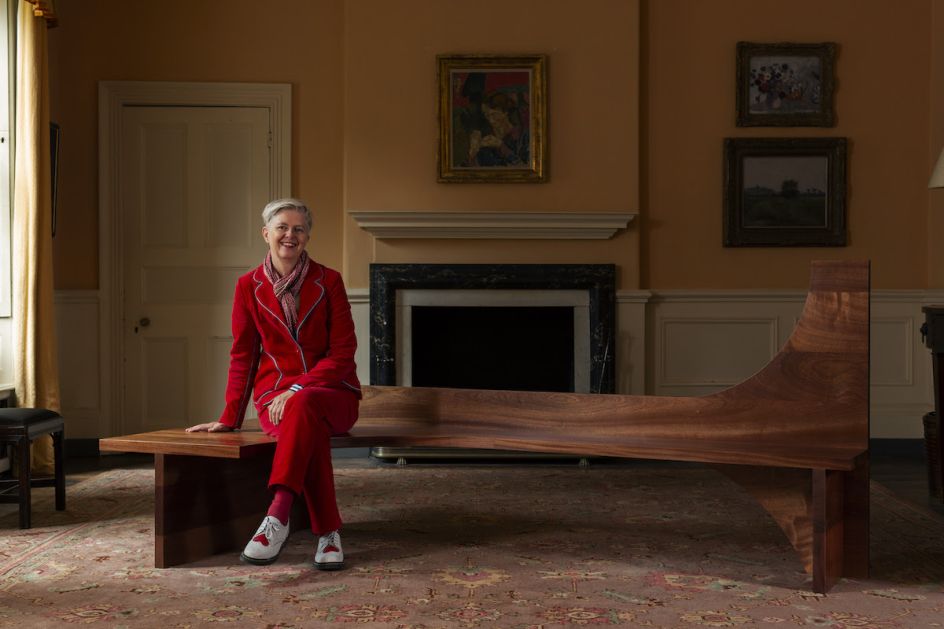
Nina Tolstrup sitting on her bespoke chair for Please Sit at Fenton House. Photo: Oskar Proctor
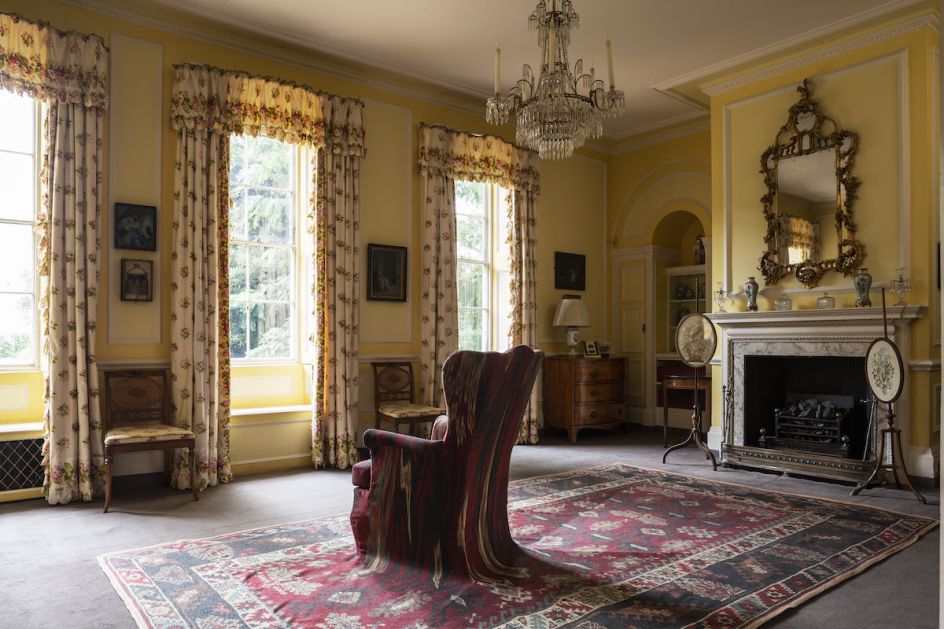
Maisie Broadhead's installation in Fenton House, as part of Please Sit curated by Gitta Gschwendtner. Photo: Oskar Proctor
Digging deeper into what we can expect, inspired by the embroidery collection in Fenton’s Rockingham Room – particularly, a silk piece titled Jacob’s Dream – Gitta Gschwendtner has translated the idea of Jacob’s ladder from heaven to earth into the form of a chair with a surreally high back, stretching upwards to the unknown. Gitta is also creating a series of Ladder Chairs in galvanised steel to feature in the gardens and orchard.
In response to the house’s collection of harpsichords, the "furnitureness" of the instrument, and the hints they suggest about their collector, Carl Clerkin is creating a wingback chair that incorporates speakers and typical speaker materials (such as ash, valchromat, foam and mesh), immersing the visitor in a fictional audio tale about imaginary past inhabitants.
Maisie Broadhead delves into the story of Fenton House’s last private owner, Lady Binning, a reclusive widow who remained in mourning for her husband long after convention would demand. Completely consumed by the carpet around it, Maisie’s chair plays upon the idea of being "trapped" by the house – part of the furniture, as it were.
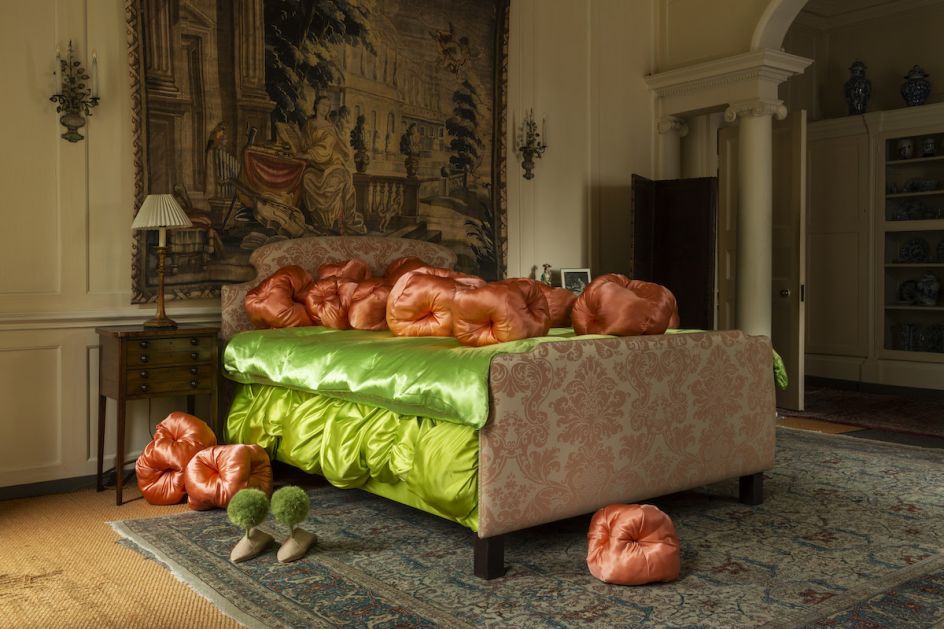
Experimental seating installation by Frith Kerr as part of Please Sit at Fenton House. Photo credit: Oskar Proctor
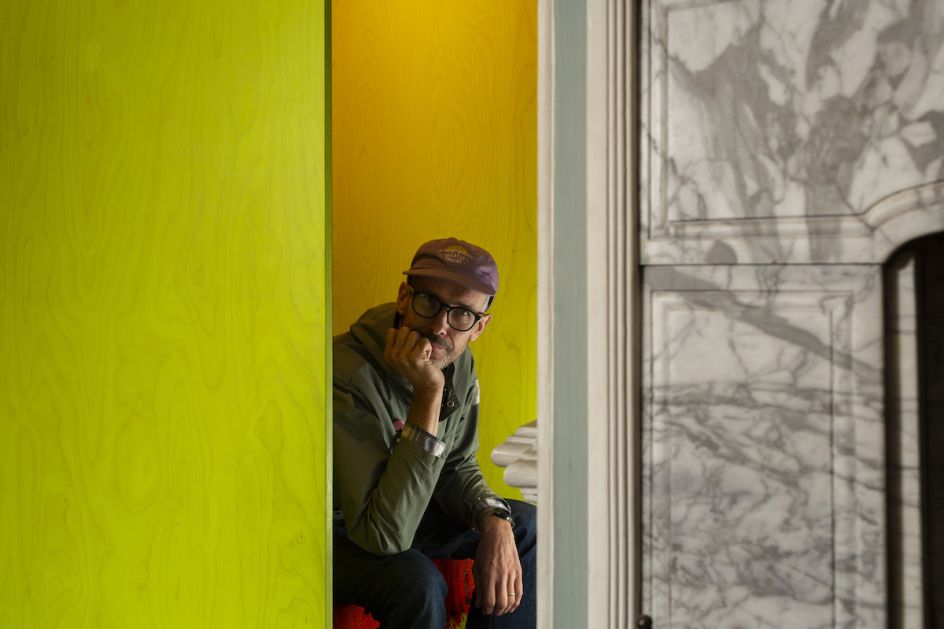
Michael Marriott inside his seating installation as part of Please Sit at Fenton House. Photo credit: Oskar Proctor
For Fenton’s Oriental Room, which contains a former occupant's extensive collection of 43 snuff boxes and perfume bottles, Michael Marriott is creating a geometric, oversized plywood chair, large enough to enable two sitters to view the collection in privacy.
Taking inspiration from the Shudi Broadwood harpsichord in the Dining Room (one of only 10 that were made and the most sophisticated of its time), Nina Tolstrup is creating a sculptural bench in solid wood, its form inspired by the structure of the harpsichord, giving people a place to sit and listen to recitals.
Meanwhile, Frith Kerr is creating a piece for the Blue Porcelain Room, once the bedroom of Lady Binning. Comprising a bed installation and wall hanging, her piece considers notions of good and bad taste. With poodles.
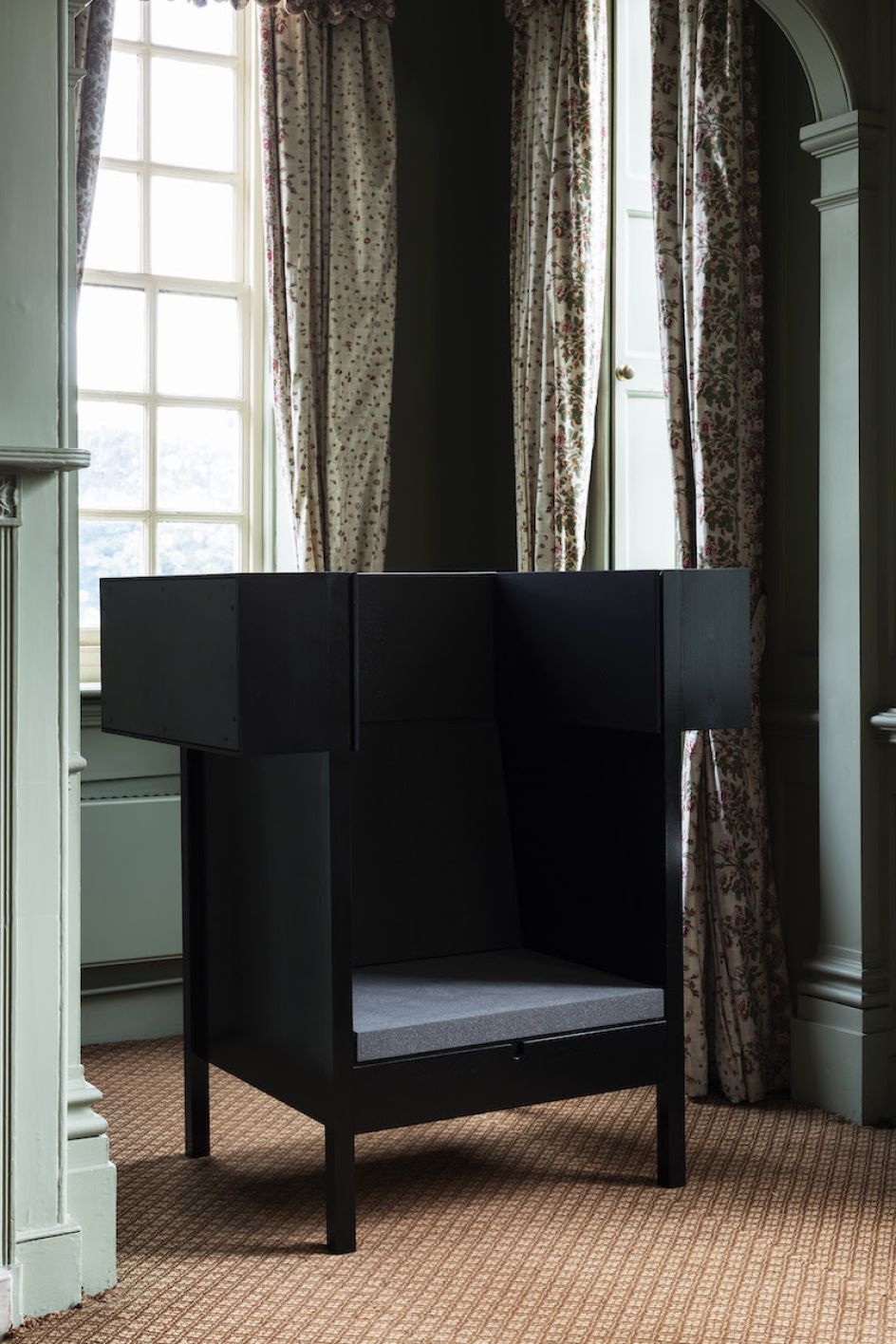
Chair by Carl Clerkin. Photo credits: Oskar Proctor
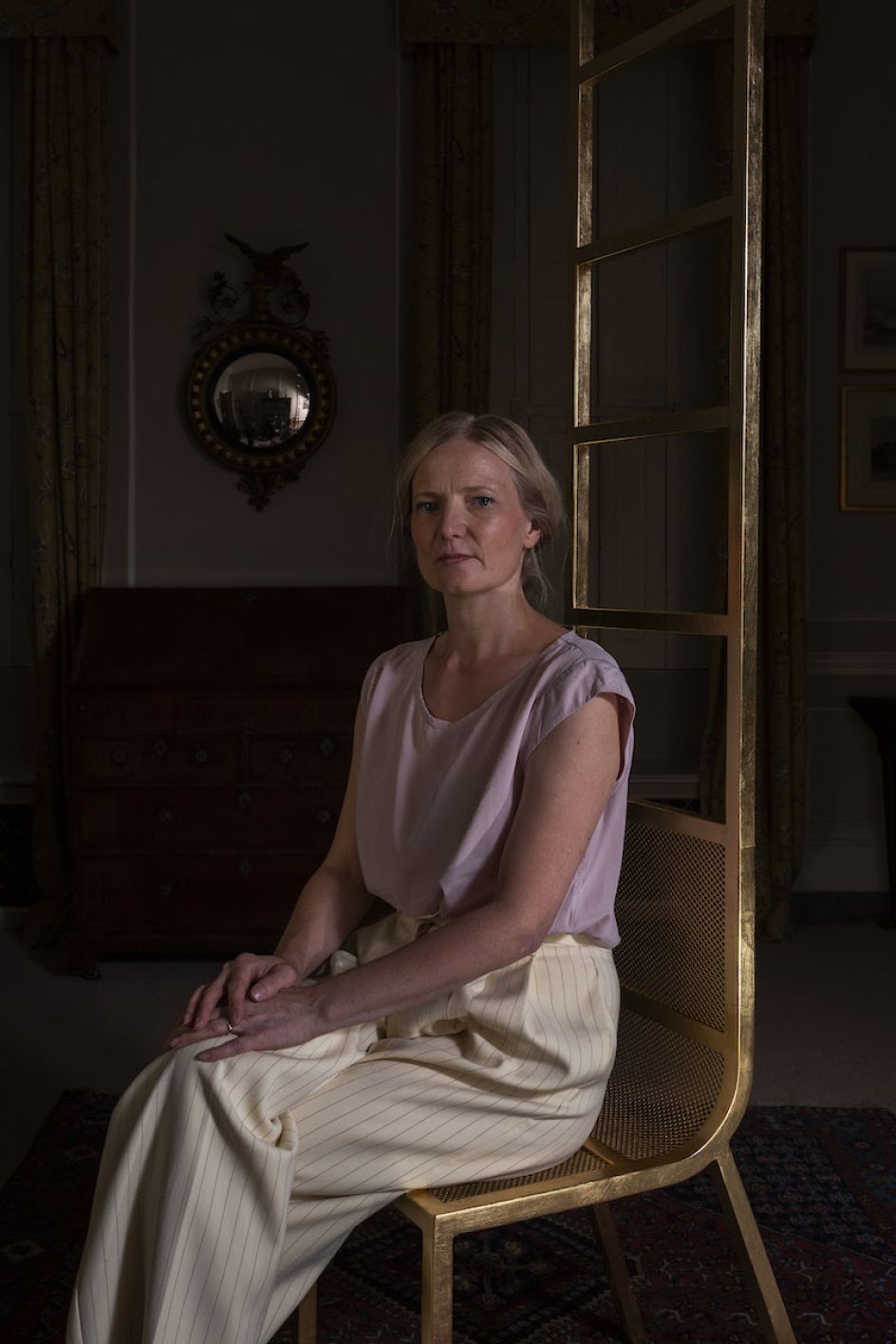
Gitta Gschwendtner on her chair. Photo credits: Oskar Proctor
"Asking the visitor to sit, makes them more than just a spectator," says Gitta, "they become a guest, invited to participate in the setting. I am interested in how the six designers will interpret the house differently, look at different aspects of the house and create very different seats, which become objects in the room. This creates a much richer narrative."
Please Sit is now open at Fenton House, Hampstead and will run until Spring 2020. Find out more at www.nationaltrust.org.uk.




 by Tüpokompanii](https://www.creativeboom.com/upload/articles/58/58684538770fb5b428dc1882f7a732f153500153_732.jpg)


 using <a href="https://www.ohnotype.co/fonts/obviously" target="_blank">Obviously</a> by Oh No Type Co., Art Director, Brand & Creative—Spotify](https://www.creativeboom.com/upload/articles/6e/6ed31eddc26fa563f213fc76d6993dab9231ffe4_732.jpg)








